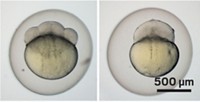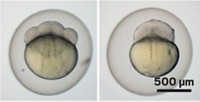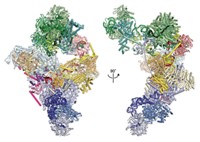Advertisement
Grab your lab coat. Let's get started
Welcome!
Welcome!
Create an account below to get 6 C&EN articles per month, receive newsletters and more - all free.
It seems this is your first time logging in online. Please enter the following information to continue.
As an ACS member you automatically get access to this site. All we need is few more details to create your reading experience.
Not you? Sign in with a different account.
Not you? Sign in with a different account.
ERROR 1
ERROR 1
ERROR 2
ERROR 2
ERROR 2
ERROR 2
ERROR 2
Password and Confirm password must match.
If you have an ACS member number, please enter it here so we can link this account to your membership. (optional)
ERROR 2
ACS values your privacy. By submitting your information, you are gaining access to C&EN and subscribing to our weekly newsletter. We use the information you provide to make your reading experience better, and we will never sell your data to third party members.
Proteomics
The first known nitroplasts
Imaging and proteome analysis reveal the first nitrogen-fixing organelle, found in marine algae
by Fionna Samuels
April 12, 2024
When Tyler Coale finished analyzing the proteomes of Braarudosphaera bigelowii and the spherical body nestled inside the cytoplasm of the algal cells, he realized he may have solved a mystery his adviser had uncovered decades before. Proteins translated from nuclear DNA were being transported into the spheroid; the structure was clearly more than a nitrogen-fixing symbiote to the host cell. “It is behaving as an organelle,” Coale says. That makes it the first nitrogen-fixing organelle, or nitroplast, ever identified (Science 2024, DOI: 10.1126/science.adk1075).

“He got the data back, he presented it, and it was fantastic,” says Jonathan Zehr, Coale’s postdoctoral adviser at the University of California, Santa Cruz, whose study of nitrogen-fixing organisms spans decades.
In 1998, while hunting for nitrogenase-coding genes in seawater, Zehr discovered that organisms within the unicellular cyanobacteria group A, or UCYN-A, were capable of nitrogen fixation. He was shocked when, 10 years later, a full genome sequence revealed that one species’ genome was so sparse that the organism could not translate proteins necessary for independent survival. After 4 more years of research, Zehr uncovered that this UCYN-A was in a symbiotic relationship with algae, but the nature of their symbiosis remained a mystery, impossible to discern from wild samples. Zehr’s group needed a culture.
Unfortunately, marine cell lines are finicky about growing in labs. It took more than 10 years for a collaborator, Kyoko Hagino of Kochi University, to crack the code to growing B. bigelowii in the lab. “That culture is what this research is built on,” Coale says. Once the team could generate biomass, Coale says, it started using “the tools of modern biology that a lot of biologists take for granted.”
When the team took images of cultured B. bigelowii with an optical microscope, they saw that UCYN-A was living inside its algal host. The symbiote likely arrived there through primary endosymbiosis—a predecessor of the prokaryote was engulfed by an ancient B. bigelowii ancestor.
Then the group used soft X-ray tomography, an advanced imaging technique that can capture CT-scan-like 3D images of an entire cell, to watch a B. bigelowii cell divide. Surprisingly, UCYN-A divides in a synchronized sequence with the host cell—just like a mitochondrion or chloroplast, other organelles that arose through primary endosymbiosis. That kind of synchronization is not random and indicates that the cell treats UCYN-A exactly like its other organelles by directly influencing behavior, Zehr says.
Coale’s proteomic analysis was the final piece of the puzzle: the vital proteins UCYN-A is missing because of its diminished genome are replaced by proteins translated from algal nuclear DNA. The algae have even evolved a way to tag certain proteins with a long tail of peptides to indicate which need transport into the UCYN-A.
Marine microbial ecologist Ramon Massana of the Institute of Marine Sciences, part of the Spanish National Research Council, considers these data convincing evidence that UCYN-A has evolved from a symbiote into an organelle. “I found it very exciting that these scientists were able to say that there is another cellular component,” even if it’s not universal to all eukaryotes, he says..





Join the conversation
Contact the reporter
Submit a Letter to the Editor for publication
Engage with us on Twitter